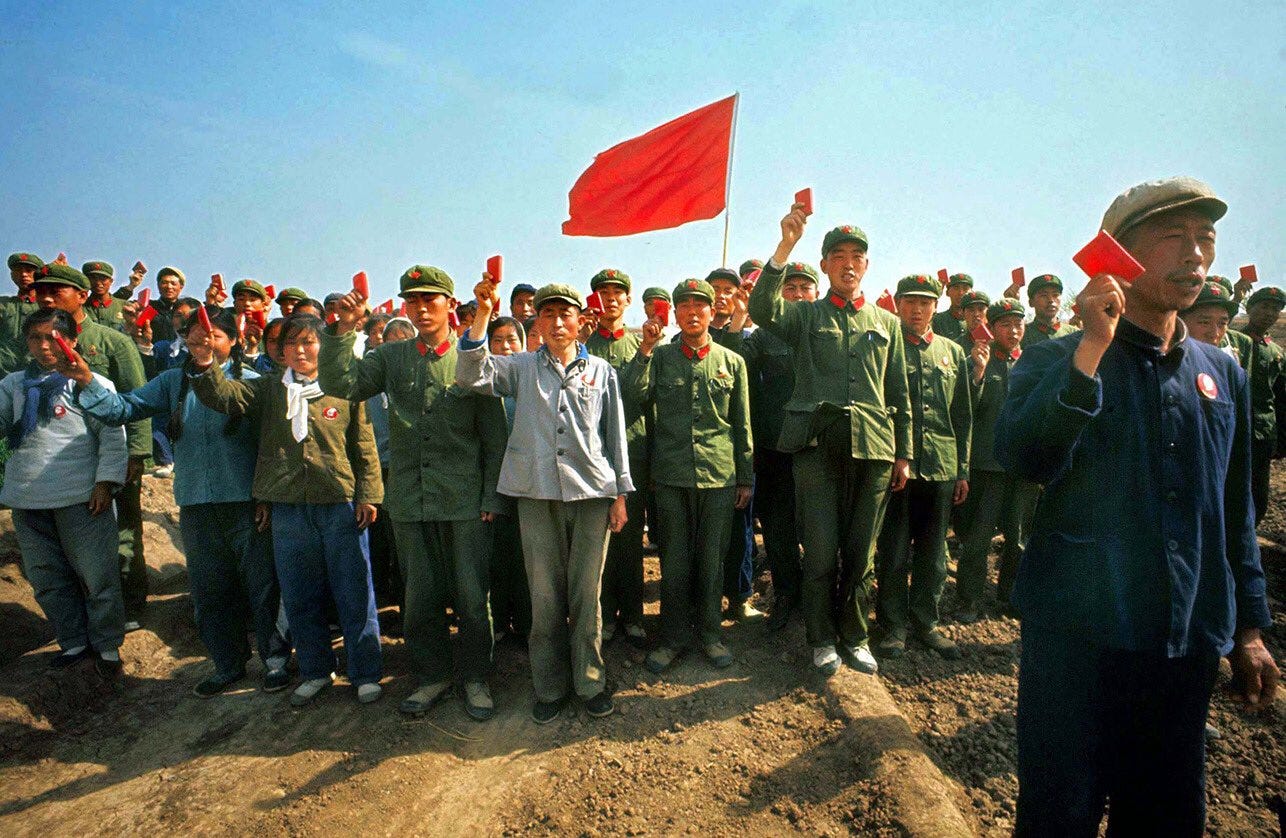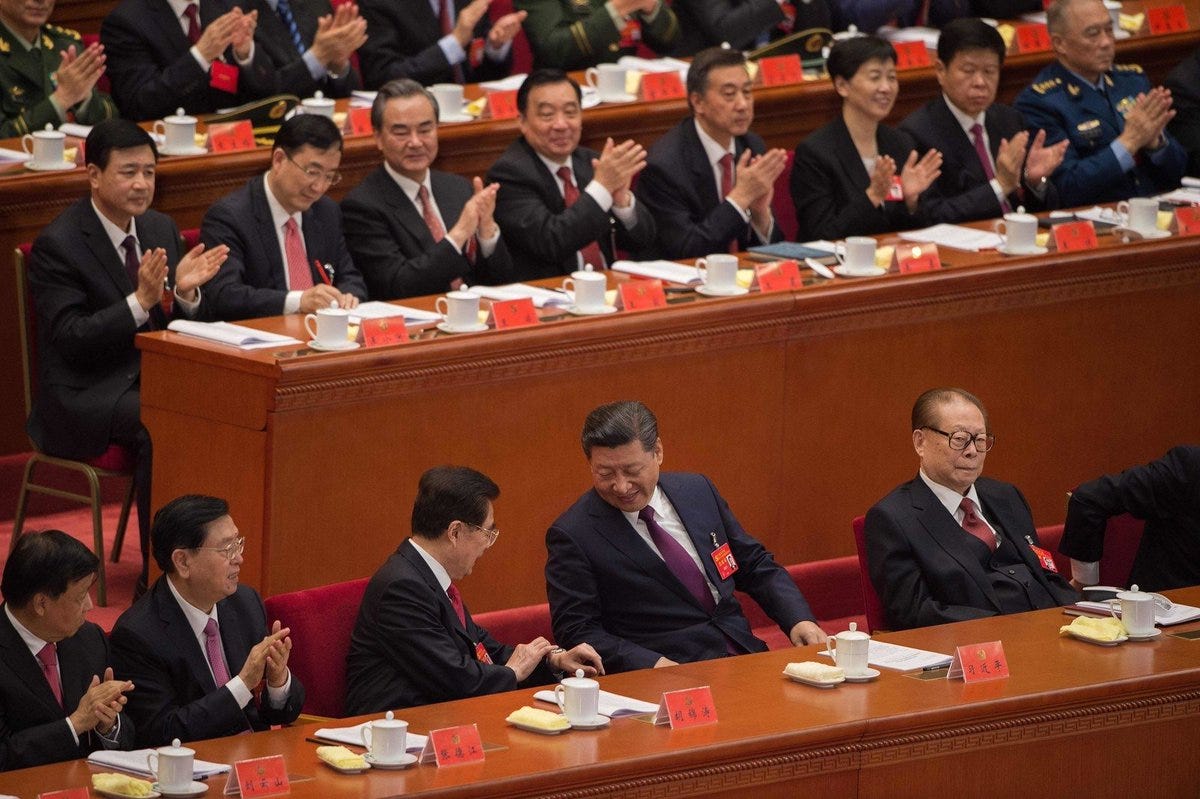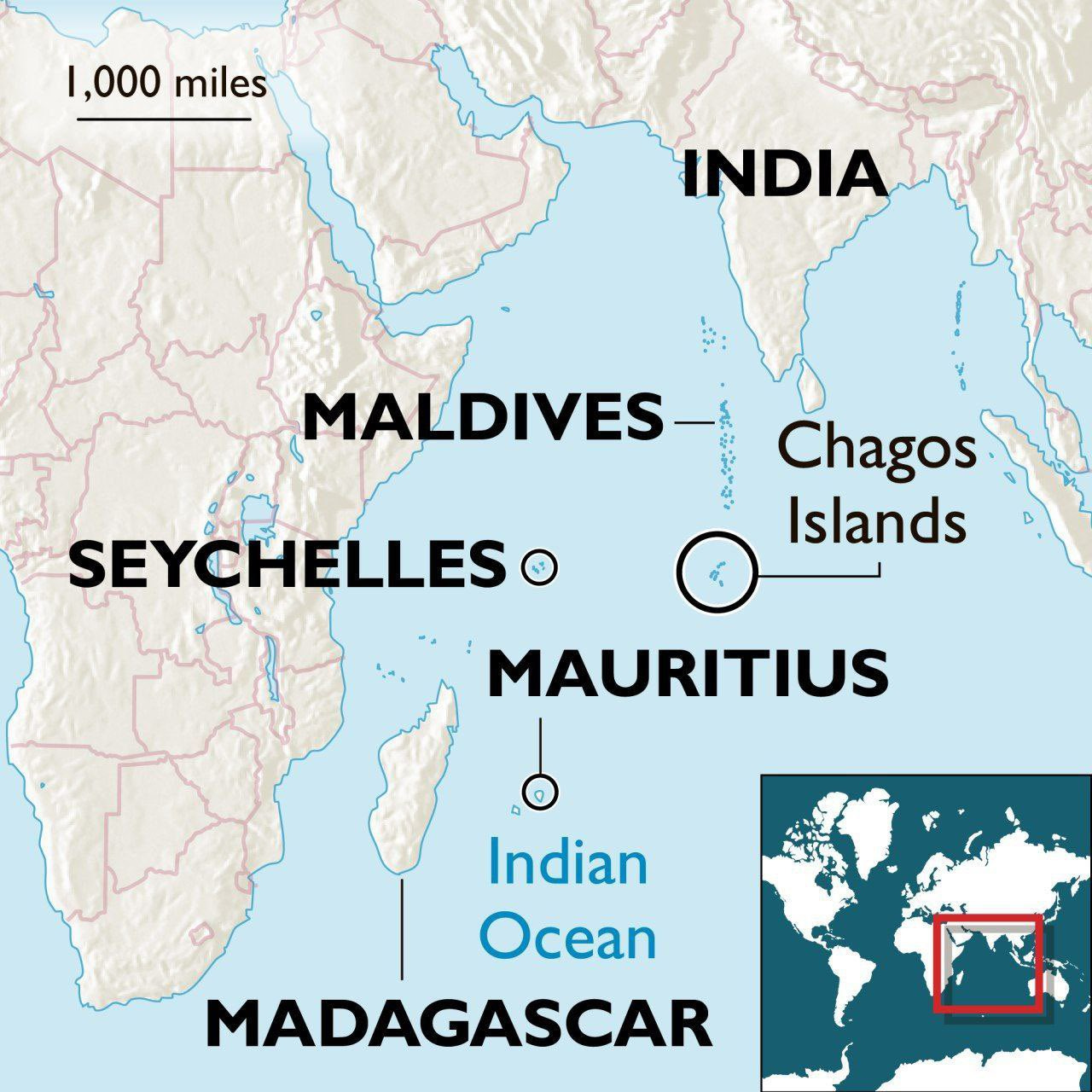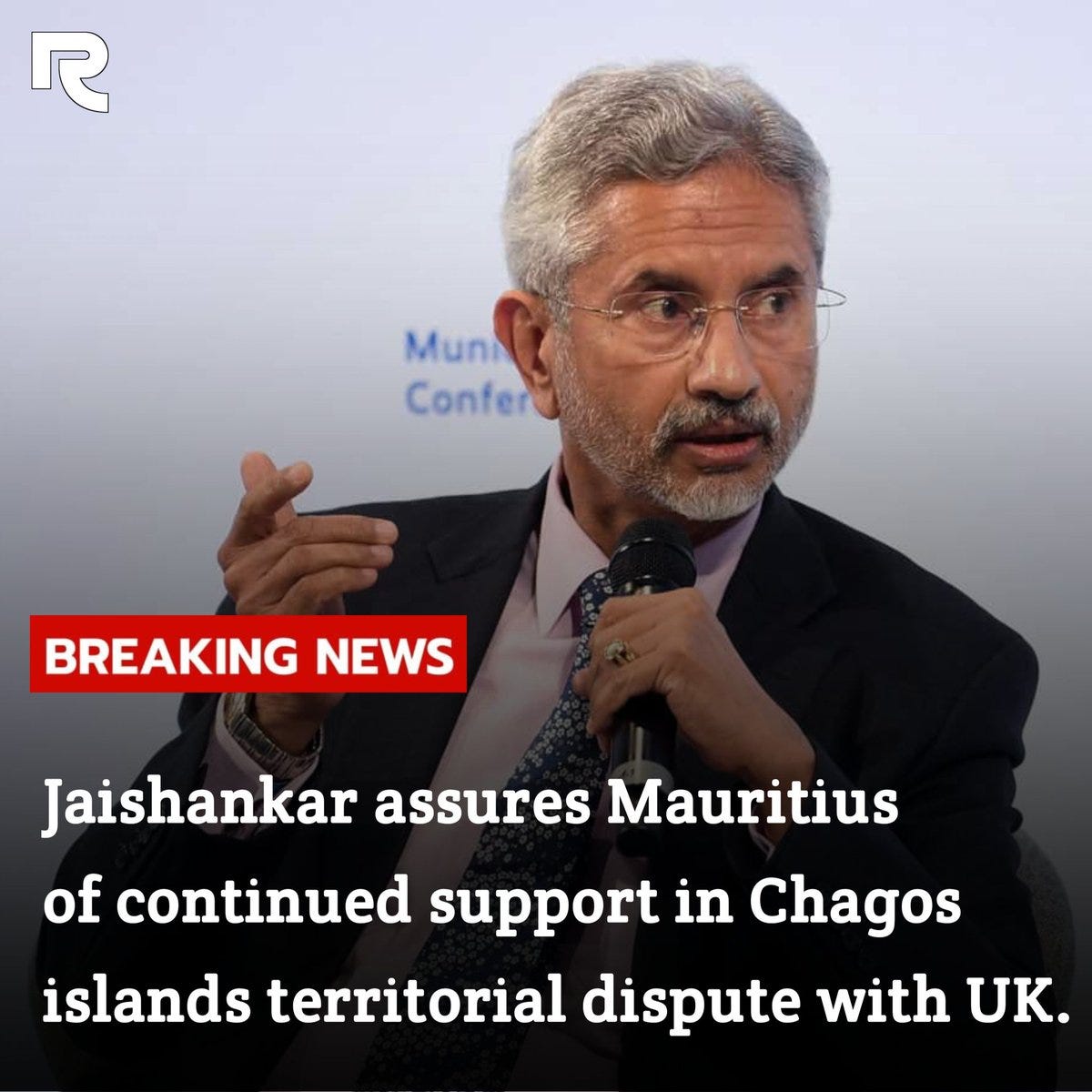China’s third plenum--Long March to 2050 remains on course despite headwinds
+ India backs Mauritius’ claim to Diego Garcia, pokes US, UK in the eye
Within the last fortnight two heavyweights of the multipolar world—China and India—demonstrated their strategic autonomy defying headwinds from the West trying to divert them from their chosen path. From Beijing, the Chinese leadership messaged loud and clear during the third plenum of the 20th party congress that it remained fixated to its declared goal of becoming the strongest pole of the global system by 2050, notwithstanding the cross-currents of geopolitical hostility that were currently blowing its way. Separately, India thumbed the United States and the United Kingdom in the nose when it publicly stepped up its support for Mauritius’ claim on British occupied Diego Garcia, a key US outpost in the Indo-pacific that supplemented Guam, the anchor of US firepower in the West Pacific. Enjoy the two back-to- back write-ups below
China’s third plenum--Long March to 2050 remains on course despite headwinds
Third Plenum of 20th Central Committee of Communist Party of China (CPC) has been held July 15-18, focusing on China's strategic goals.
Emphasis on continuity with Xi Jinping's long-term vision for China's global leadership by 2050. In 2017 during the 19th Party Congress Xi had declared that China must lead in all fields of human endeavour. This had to be accomplished by 2049, when the People’s Republic of China (PRC) turned 100.
Challenges addressed include economic slowdown, geopolitical tensions, and dissonance inside the rocket forces of the People’s Liberation Army (PLA)
Priorities outlined: economic stability, technological innovation (AI, green tech), and military modernization.
Decision taken to steer towards "Chinese-style modernization" amidst global uncertainties.
Strategic decisions taken at the 3rd Plenum are likely to shape upcoming five-year plan in 2025.
The Chinese top leadership has concluded a three-day conference; a major event that the world can ill-afford to ignore. Couched in convoluted terminology—Third Plenary Session of the 20th Central Committee of the Communist Party of China (CPC)--it is important to break it down to absorb the Chinese puzzle in its essence.
Plenary Sessions or Plenums are apex meetings of the Communist Party of China (CPC)—actually of its 370-member strong Central Committee--the Party’s leadership core. They are periodically held within a five-year time frame. This time horizon is important for it is here that Plenums get linked with Party Congresses--another hallmark of the People’s Republic of China (PRC). Under its Leninist-Maoist model derived from the Soviet Communist Party, China, every five years, holds a Party Congress. This is a mega event where over 2000 party delegates are handpicked from China’s 22 provinces, 5 Autonomous regions, 4 directly controlled municipalities as well as Hong Kong and Macao, the designated Special Administrative Regions. They all converge, some draped in colourful local attire, in the ornate Great Hall of the People in Beijing. The eye-catching extravaganza goes on for nearly a week, throwing up in the end, a new top leadership lineup, apexed by a 7-9 member Standing Committee of the Politburo.
Caption: China has 22 provinces (China claims self-governing Taiwan as its 23rd province), 5 autonomous regions, 4 direct-controlled municipalities and 2 special administrative regions (Source, Quora https://www.quora.com/What-is-the-difference-between-an-autonomous-region-and-a-province-in-China)
Within the half-a decade horizon of a Party Congress, around 7 plenums are held at periodic intervals. It is in these stock taking conclaves that previous decisions are reviewed, and if course correction is required, fresh instructions are issued, which are then top-down percolated among the formidable 86 million strong cadre of the CPC. In this cycle of Congresses and plenums, Xi Jinping’s persona has loomed large. In November 2012, Xi became both General Secretary or head of the CPC—the most powerful post—as well as chairman of the Central Military Commission (CMC), a critically important body that marshals millions of soldiers comprising the People’s Liberation Army (PLA). Since March 2013 Xi also became the President of China, completing his hold on all top levers of power in the PRC establishment.
Incidentally, third plenums, which take place towards the middle of Party Congress’ existence, have in the past, often taken decisive decisions at nodal points of China’s recent history. For instance, two-years after the death of Mao Zedong PRC’s founding father, the 1978 third plenum adopted the pathbreaking policy of opening up and reform—the leitmotif of China’s rise. The decisive move was necessary because China by was then desperately on edge, following the trauma of Mao’s cultural revolution, which played havoc for nearly a decade.
Caption: China in the middle of the Cultural Revolution in 1972
In 1993, the third Plenum under the stewardship of Little Helmsman Deng Xiaoping, formalised China’s transition to a “socialist market economy,” grafting market principles, without abandoning, at least on paper, the country’s socialist goals.
Caption: Deng Xiaoping also called the Little Helmsman pioneered China’s economic reforms
So, what were the challenges facing China in the middle of July that the 3rd Plenum had to address?
At a more fundamental level, Xi’s biggest challenge was to ensure that no decisions were taken at the Plenum that would derail the realisation of his signature national strategic goal.
In 2017, at the culmination of the 19th Party Congress, Xi had delivered a marathon speech. In that lengthy address spanning more than 3 hours, Xi had famously spelt out the country’s “two-centenary” goals. The first objective was to remove all extreme poverty by 2021, by doubling China’s GDP from the 2010 mark. This would lead to the PRC’s transition to a “moderately prosperous society”. The second centenary goal was more ambitious. It was to transform China into world’s number one nation, in all spheres of human endeavour. This target was to be achieved by 2049, in tune with the centenary celebrations of the formation of the PRC. Xi had declared that by 2049, the people should realise their “Chinese Dream”. So, it was important that focus was not lost and the roadmap charted out by the 3rd Plenum docked firmly with the bigger 2nd centenary goal of turning China into an unrivalled superpower before 2050.
Caption: Former President Hu Jintao shows Xi Jinping his watch after the latter’s three hour speech at the 19th party congress in 2017
To help clear that path, the 3rd plenum decided to confront practical hurdles that could, otherwise, digress the country from its chosen path. What were these obstructions that could derail China?
First, the 3rd Plenum had to ensure that the economy continued to fire. Already some red flags had surfaced that Beijing could ignore only at its own peril. Just before the 3rd Plenum opened China’s National Bureau of Statistics sounded the alarm. China’s second quarter earnings, from an expected 5 per cent shrank to 4.7 per cent.
The Chinese are aware that it is not easy to buck this downward trend, especially because of a worsened international environment. China’s export-led growth model had come under severe because of new geopolitical factors. China’s rise, and its pursuit of an independent path of development and foreign policy had stirred fears in the western camp that Beijing’s continued growth could topple the West from the top of the global power tree. These fears, along with the slowdown of western economies have stoked de facto protectionism and deviation from the principles of globalisation from which China had benefitted immensely. For instance, in order to retard China’s growth, the European Union has been considering slapping a 37.6 per cent tariff wall on the import of Chinese electric vehicles—an arena where Beijing is a clear market leader.
Similarly, to slow down China’s advances in AI application products, the United States has been working to limit Beijing's access to advanced AI chips, such as those designed by market leader Nvidia, fearing China may use the technology to beef up its already formidable military.
Other headwinds facing China that the plenum had to contend included the possible election of Donald Trump as the next President of the United States. Trump had been the architect of a trade war with China during his first four-year term in office that ended in 2020. The Chinese worry that further trade restrictions may follow in the second addition of Trump’s Presidency
Second, the plenum recognised that much work was still required to arrest the turbulence within the PLA. A communique released at the end of the third plenum listed the expulsion from the Party of Sun Jinming, chief of staff of the People’s Liberation Army (PLA) Rocket Force. In 2015, Xi had established the rocket force—the core of China’s nuclear deterrent—as part of ambitious military reforms.
Other tainted generals from the rocket force included Li Yuchao, who assumed the role of commander in 2022; his predecessor Zhou Yaning, who served from 2017 to 2022; and Wei Fenghe, who headed the force from its inception until 2017. At the end of last month, Wei, who later became the country’s defence minister from 2018 to 2023, was thrown out from the party at the end of last month.
The plenum also backed the Politburo’s earlier decision to expel former defence minister Li Shangfu and Li Yuchao from the party
There were other pressing issues that the Plenum addressed including cooling the highly leveraged property sector, debt accumulation by provincial governments along with sharpening the focus on tech driven green economy. Consequently, innovation in electric vehicles, industrial automation, renewable energy as well as Artificial Intelligence were top priorities. “High quality development is the primary task of building a modern socialist country in an all-round way,” the terse communique released a t the end of the meeting observed, signalling that China would unremittingly focus on advanced technological advancement based on the Industry 4.0 template in the coming years.
The communique homed on to Xi’s mindset that a uniquely indigenous model of advanced development will drive the country’s future when it said: “The current and future period is a critical time for comprehensively promoting the construction of a strong country and the great cause of national rejuvenation using Chinese-style modernisation.” Remember the operative phrase here is not foreign but “Chinese style modernisation.”
Though the communique was low on specifics, the strategic decisions taken at the forum are likely to be down streamed into the country’s next five-year plan that is expected in March 2025.
The message that emerged from the 3rd Plenum was loud and clear. Fully in command at all levels, the CPC would counter all the headwinds, and guide China’s transition to global leadership by 2050. (End)
------------------------------------------------------------------------------------------------------
India backs Mauritius’ claim to Diego Garcia, pokes US, UK in the eye
Caption: India has recently stepped up support for Mauritius’ claim over the Chagos islands including Diego Garcia—a key US bomber base that supplements Guam in the West Pacific
During External Affairs Minister, S. Jaishankar’s mid-July visit to Mauritius, India aligned itself with Mauritius' claim over the Chagos Archipelago, particularly Diego Garcia, primarily due to several strategic and diplomatic reasons:
Strategic Location: Diego Garcia is strategically located in the Indian Ocean, approximately 1,796 kilometers from India's southernmost tip (Kanyakumari). Its proximity makes it relevant to India's maritime security interests in the region.
Geopolitical Influence: By supporting Mauritius' claim, India asserts itself as a key player in the Indian Ocean region, reinforcing its strategic footprint and influence in global geopolitics.
Historical and Legal Context: India's support for Mauritius is in line with its stance on decolonization and sovereignty. The Chagos Archipelago was detached from Mauritius by the UK prior to Mauritius gaining independence in 1968, which India views as a colonial injustice.
Global South Solidarity: India's backing of Mauritius resonates with its broader diplomatic strategy of strengthening ties with countries in the Global South. This includes supporting their territorial claims and sovereignty rights as part of a shared agenda against colonial legacies.
Counterbalancing Western Influence: By challenging UK and US control over Diego Garcia, India positions itself against Western dominance in the Indian Ocean and asserts the importance of regional powers having a say in maritime security and stability.
India has joined Mauritius in stepping up pressure on the United Kingdom to give up its occupation of the Chagos Archipelago—a strategically located group of islands in the Indian Ocean, more than 2000 kilometres from Port Louis.
During a mid-July visit to Mauritius, India’s external affairs minister S. Jaishankar was unequivocal in siding with Port Louis’ 40-year claim on Chagos. On July 16, Jaishankar at a press conference in Mauritius said: “As we look at our deep and enduring relationship, Prime Minister (of Mauritius Pravind Jugnauth) I would like to again assure you today that on the issue of Chagos, India will continue its consistent support to Mauritius in line with its principled stand on decolonisation and support for sovereignty and territorial integrity of nations.”
Why is the Chagos archipelago important?
Primarily, it is because of Diego Garcia, the biggest island in the archipelago, consisting of 60 isles. After the British colonisers managed to detach the Chagos , as part of a under pressure deal that led to Mauritius’ independence in 1968, they leased it to the United States for developing a major naval base on the island. In other words, Diego Garcia became an important Anglo-American outpost in the Indian Ocean, a key base in the Indo-Pacific hosting US long range bombers, supplementing the Anderson Air Force base in Guam. Incidentally Diego Garcia is 1,796 kilometres from Kanyakumari, India’s southernmost tip.
In a bid to serve America’s strategic goals, the British on Washington’s prompt expelled inhabitants of the Chagos Archipelago chiefly Diego Garcia—the process beginning in 1968 and culminating in 1973, leading to serious accusations of rights violations.
Timing of India’s statement—some context
Jaishankar’s pledge comes at a time when Mauritius’ 40-year campaign for reuniting the Chagos archipelago with the mainland, and the return of the Chagossians, has made considerable headway. Based on a 2019 ruling of the International Court of Justice that designated British occupation of the archipelago as illegal, the UN General Assembly passed a resolution that set a 6-month timeline for the return of the archipelago to Mauritius.
Going Deeper
There are at least two factors that apparently motivated India to back Mauritius unequivocally.
First, Jaishankar’s declaration docked with India’s visible outreach to the Global South, first seen in January 2023 when Indian Prime Minister Narendra Modi hosted the first Voice of Global South Summit. Modi amplified this pitch to a higher decibel during the New Delhi G-20 summit later in September. Here India took credit for enabling the 55-nation African Union’s membership of the G-20 grouping—a move that went down well with the Global South.
https://x.com/PTI_News/status/1700381992154505228
By forcefully backing Mauritius this time, India was reinforcing the point that New Delhi is a reliable partner for championing Global South’s causes in our rapidly transitioning world. Incidentally, Jaishankar carefully couched his backing for Mauritius as an expression of India’s unwavering support for decolonisation—a phrase that is likely to resonate well, especially in Africa, where large parts of the continent are beginning to experience what is being called the second wave of decolonisation.
Second, by going public in support of Port Louis, India was also poking in the eye, both UK and the US, who would lose out big time if Mauritius were to exercise its sovereignty over the Chagos archipelago. India’s ties, especially with the US have been souring of late, especially after New Delhi substantially stepped up its commercial engagement with Russia after the onset of the Ukraine war. Modi’s choice of Moscow as his first pit spot after he assumed a third term in office along with his visible bonding with Russian President Vladimir Putin has also not gone down well among key members of the Atlantic Alliance, who have been frenetically supporting Ukraine.
Caption: Russian President Vladimir Putin greets Prime Minister Narendra Modi after conferring Russia’s highest civilian award on him
New Delhi therefore was not amused when the US ambassador to India, Eric Garcetti criticised his host country, following Modi’s visit to Moscow, for exercising its strategic autonomy. “I know that India likes its strategic autonomy, I respect that, but in times of conflict there is no such thing as strategic autonomy” Garcetti complained during a New Delhi public event. In a firm but polite rebuke, the Indian foreign ministry stressed: “India, like many other countries, values its ‘strategic autonomy.’ The US Ambassador is entitled to his opinion. Obviously, we have different views.” Jaishankar seems to have gone many steps further in ticking off the Americans during his visit to Mauritius.









